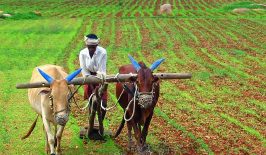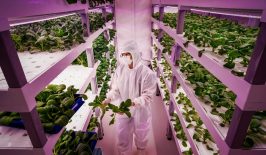In Yemen alone, 24 million people are in need of humanitarian assistance, according to the International Rescue Committee’s Emergency Watchlist 2020. That puts it at the top of a list of ten countries countries that represent less than 6 percent of the world’s population, yet host more than half of all people identified as being in need globally, and have produced nearly three-quarters of the world’s refugees. That IRC report was released at the beginning of 2020 and therefore did not take into account the impact of the Corona pandemic – in many places, the situation may have worsened in the meantime.
Providing healthy nutrition for so many people is an enormous task. Support for this challenge now comes from researchers at the German Aerospace Center (DLR): in the “MEPA” project, which stands for “mobile deployable plant growing unit,” mobile greenhouses have been developed that can be used not only in the short term but also in the medium term by people in emergency situations to grow fresh food. “Never before has there been a greenhouse like this in the context of humanitarian aid,” team leader Dr. Daniel Schubert tells RESET enthusiastically. “It’s easy to transport, can be set up independently on site, and immediately goes into food production.”
All good things come in threes
The researchers have developed a total of three systems for use in crisis areas. All three require no soil, are reusable, easy to transport and use, and deliver initial yields after just four to six weeks.
In the minimum system of MEPA plant cultivation units, around 85 heads of lettuce with a total weight of 40 kilograms grow per harvest cycle. The growing area is seven square metres, solar-powered and based on hydroponics in open water basins. The hybrid system also uses solar energy, and the semi-enclosed system can also recover water. In this MEPA system, small plants can be grown over an area of about 20 square metres. It is an inflatable greenhouse of just under one metre in height, which contains a seed growing mat illuminated with LED strips. The largest of the three greenhouses is the closed-loop system. It grows larger vegetables such as tomatoes and cucumbers. It is walk-in, as it is three meters wide and 17 metres long; with an area of 40 square metres that can be used for growing. Irrigation, ventilation, temperature control and energy supply form a closed-loop system and are controlled by support modules. Up to 21 units could fit into a simple cargo container, for a total cultivation area of 350 square metres.
Researchers from the DLR Institute of Space Systems and the DLR Institute of Aerospace Medicine were involved in developing the mobile greenhouses. Key to the development of the project was the practical experience gained from the EDEN project, in which they are testing this method of cultivation in the middle of Antarctica in order to secure food supplies for stays in space. To ensure that the mobile greenhouses are designed to meet the special requirements of humanitarian aid, the United Nations World Food Program, the German Agency for Technical Relief, Plan International and the non-governmental humanitarian aid organization ADRA have also all provided support with their experience from humanitarian aid missions.
Over the next two years, the DLR team will build and field test the MEPA systems and a prototype is set to be tested in a camp for refugees in late 2021. “This is the only way we can see what MEPA systems are all about,” says Daniel Schubert. “We want to improve them, and that can only be done under real conditions. Unfortunately, the coronavirus could delay implementation.”
Slum, rooftop & refugee camp – these greenhouses are an all-rounder
In the long term, the mobile greenhouses are set to be used in a wide variety of settings – not only to provide emergency relief after environmental disasters such as earthquakes, floods or droughts, but also in remote villages or densely populated areas. “It doesn’t matter if it’s an inner-city slum or a rooftop in NewYork, there are countless applications,” said Daniel Bauer. “The greenhouses can even help support refugees,” Daniel Bauer continues. “Many host countries, such as Jordan, prohibit refugees from growing crops because it gives the impression that they are settling there. But since the MEPA systems don’t need soil, they are allowed to be used in camps.”
Focusing on growing foods such as vegetables, fruits and nuts makes sense; researchers have concluded that a diet with an emphasis on non-animal products could sustainably feed the entire population.
This is a translation of an original article that first appeared on RESET’s German language site.






